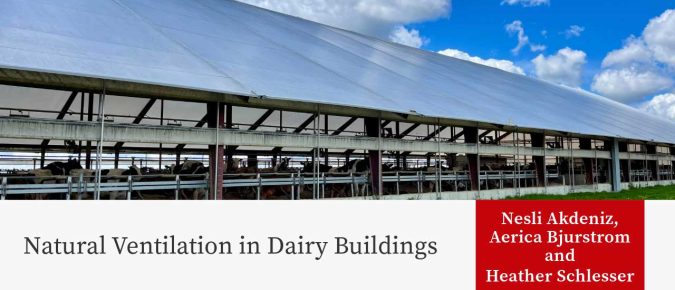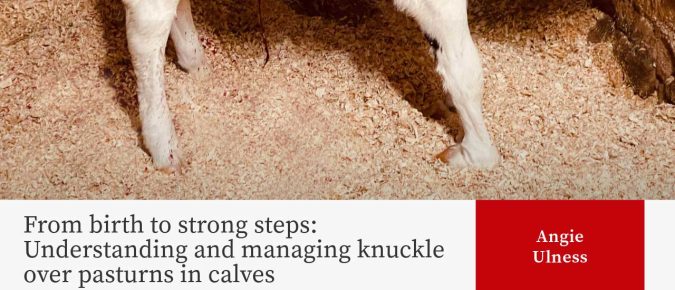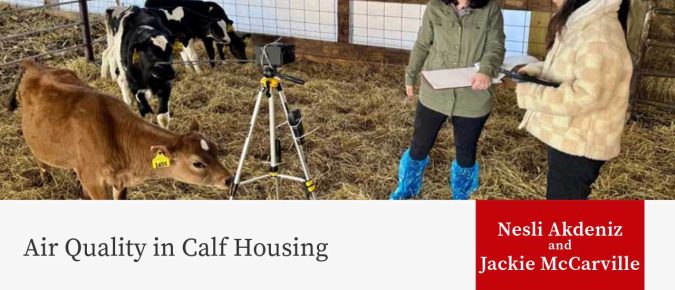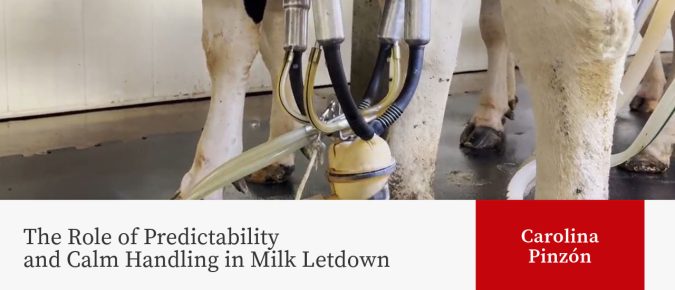Articles
Cross-Ventilation in Dairy Buildings
Cross-ventilated barns offer a modern, effective solution to managing the thermal sensitivity of dairy cows, particularly in the face of rising temperatures and heat stress challenges.
▶️ Watch: BLV is not PFAS it doesn’t have to last forever
Bovine leukosis infection in cattle, like PFAS chemicals, is almost universal in dairy herds. Yet, unlike PFAS, we don’t have to resign ourselves to living with it; we can take specific steps toward its control and elimination
▶️ Watch: Disease Basics An Overview of Bovine Leukemia Virus
The presentation provides an overview of Bovine Leukemia Virus (BLV) including the biology of the virus, impacts on cattle health and production, diagnostics, and control.
Ventilation Fan Noise in Dairy Buildings
Routine farm activities such as feeding, cleaning, and vehicle movement all contribute to ambient noise.
▶️ Watch: New Technologies in Dairy Farming
Recent advancements in dairy farming technology are enhancing efficiency, animal welfare, and farm management through precision livestock technologies, automation, and data integration.
Navigating Low Colostrum Yields in Dairy Cows
Colostrum is an essential source of nutrients, antibodies, and growth factors that set calves up for a strong start to life. Years of research have consistently shown the most critical management factor for calf health and survival is providing early, adequate volumes of high-quality colostrum.
Natural Ventilation in Dairy Buildings
Ventilation is vital in dairy barns for maintaining air quality, removing heat and moisture, and providing a comfortable environment for cows. Ventilation can be achieved through mechanical or natural systems that utilize thermal buoyancy and wind pressure.
▶️ Watch: Higher Fertility Success for Wisconsin Dairy Farmers: Panel Discussion
Dr. Paul Fricke moderates a Wisconsin dairy farmer panel consisting of David Jauquet, Mike Martin, Jeff McNeely, and Chuck Ripp. These dairy farmers give highlights of protocols used on their dairies that help them achieve higher fertility success.
From birth to strong steps: Understanding and managing knuckle over pasturns in calves
Calves born with knuckle over pasterns, also known as contracted tendons, present a unique challenge for dairy and beef producers.
Cows Don’t Like Surprise Parties
While a surprise party might be fun for humans, unpredictability can get in the way of milk letdown and overall milking performance.
Air Quality in Calf Housing
Proper housing is essential for the health and growth of dairy and beef calves. It provides a clean, dry, and comfortable environment to support healthy development and minimize disease risks.
The Role of Predictability and Calm Handling in Milk Letdown
Cows are creatures of habit. They thrive on predictable routines, gentle handling, and calm surroundings. A consistent routine in the milking parlor helps cows to relax.
















